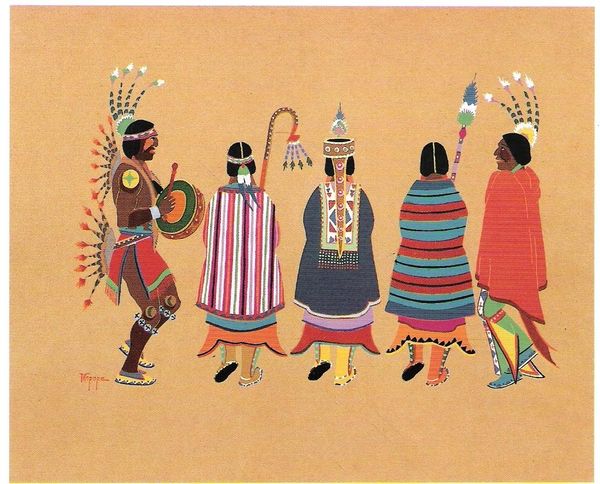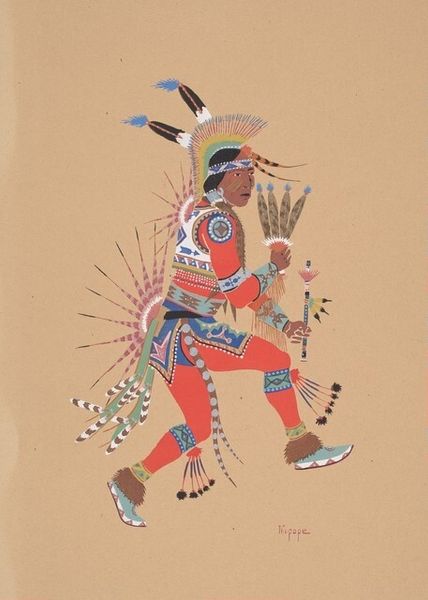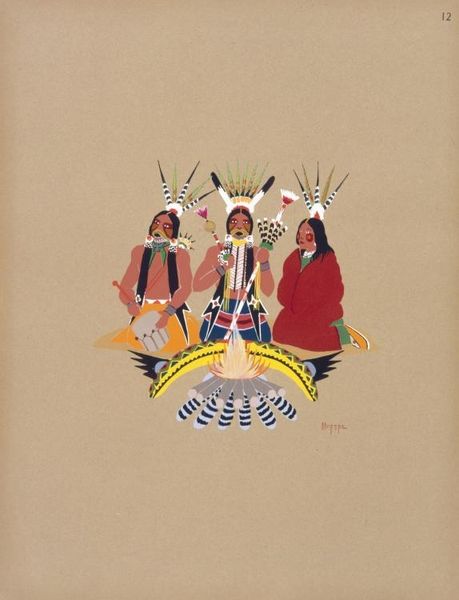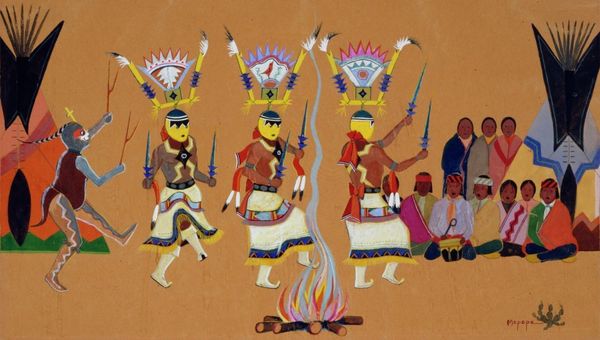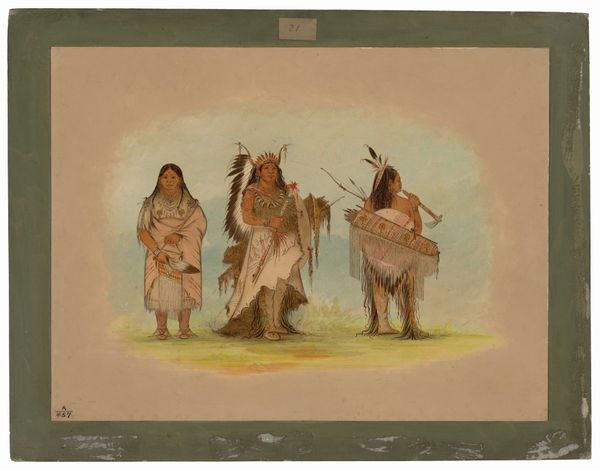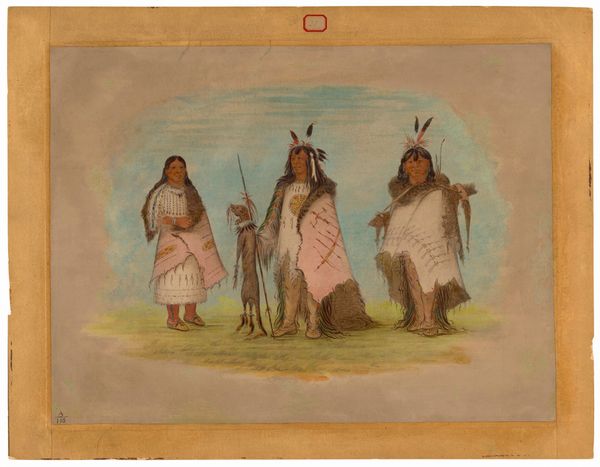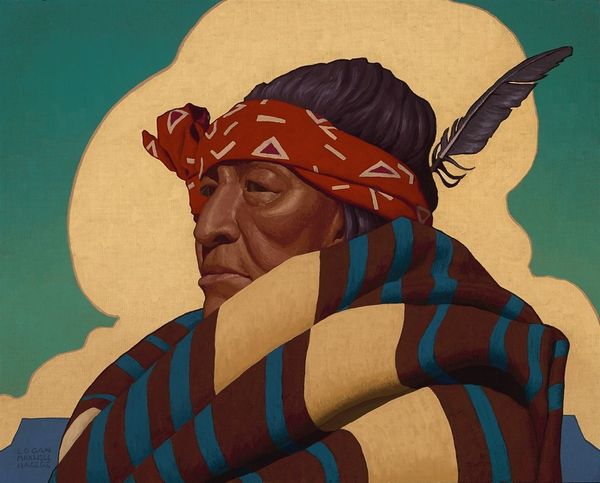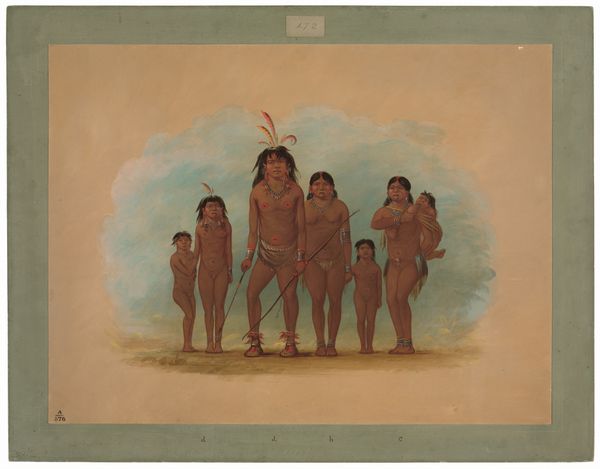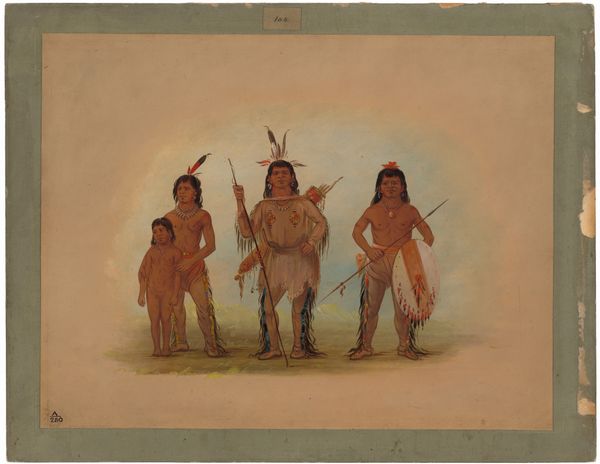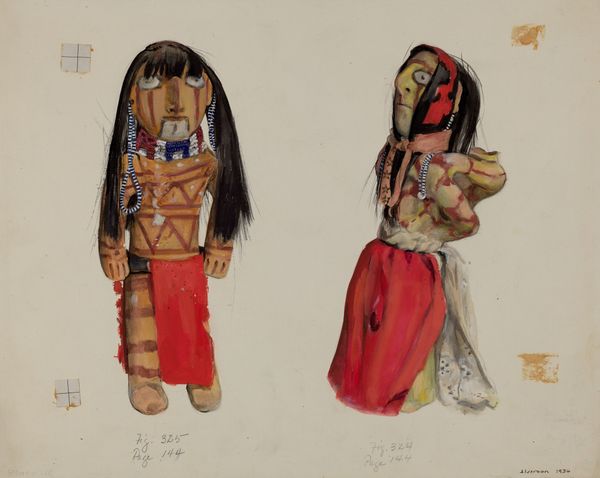
painting
#
narrative-art
#
painting
#
caricature
#
figuration
#
indigenous-americas
Copyright: Stephen Mopope,Fair Use
Curator: Stephen Mopope created this painting, "Two Eagle Dancers," in 1936 using acrylic paint. Editor: It strikes me as quite vibrant, yet strangely flattened. The figures, though active, possess a static quality, like pressed flowers in a botanical study. Curator: Precisely. Mopope, belonging to the Kiowa Six, synthesizes Modernist tendencies with Indigenous artistic conventions. Observe how he employs a flattened perspective and minimizes shadow to amplify the decorative elements of the composition. Editor: The symbolism is layered, of course. Eagle dances are significant across many Native American cultures, often representing a connection to the spirit world, courage, and healing. Their gestures mimic the eagle's flight, becoming prayers for strength and renewal. Curator: Consider also how Mopope’s rendering eschews pure naturalism. The bodies are stylized, their limbs elongated, almost geometric. Note the color choices; they amplify symbolic meaning beyond the mimetic. Editor: Indeed, that striking yellow-gold background recalls ancient rock art, linking past and present. It reinforces that the dance isn’t merely performative, but a continuation of a deep, ancestral narrative. Curator: It’s also important to understand Mopope’s formal art training. He bridges both traditional modes of representation and externally derived stylistic parameters in unexpected ways. It presents such an intriguing liminal space. Editor: A visual encapsulation of cultural endurance—powerful stuff, captured in such deceptively simple forms. I see continuity and resistance, all rendered in this wonderful style. Curator: Yes, an aesthetic negotiation. Formally exquisite, culturally profound. Editor: It prompts us to contemplate not only what is seen but what persists beneath the surface.
Comments
No comments
Be the first to comment and join the conversation on the ultimate creative platform.

